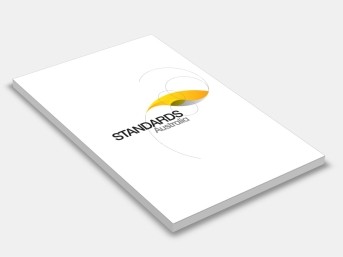AS 1345-1995 Identification of the contents of pipes, conduits and ducts
Standards Australia
Supersedes: AS 1345-1982 Identification of the contents of pipes, conduits and ducts
Supersedes: AS 1345-1982 AMDT 2 Identification of the contents of pipes, conduits and ducts
Draft Designation: DR 93250Reconfirmed by: AS 1345-1995 REC:2018 Identification of the contents of pipes, conduits and ducts
The basic colour scheme for pipe identification remains virtually the same as it was in the 1982 edition, as does the design and use of pipe markers. The only significant difference is the inclusion of a dark-blue supplementary colour to be used as an additional colour band around pipes carrying materials for human consumption.
A number of other changes have been made to the Standard with a view to making it easier to understand and use by practitioners. For example, the tabulation of base colours and their uses now includes a series of illustrative examples of where each colour should, and should not be used.
As regards the specification of colour, the Standard now provides both for a target colour for matching colour-mixed surface finishes such as paints, and a colour tolerance where ready-made materials such as adhesive films or as-supplied pipe colour are to be considered.
In the Foreword to the 1982 edition it was noted that the colour system adopted in that Standard was based on the International Standard ISO /R 508*. The Committee observed at that time that this International Standard had been approved by many ISO member bodies and that it applied to shipping as well as land installations. Furthermore, the requirements of ISO/R 508 were considered to possess intrinsic merit in that the number of colours were reduced to a minimum and the colours given were sufficiently distinct from one another to be separately identifiable when seen in isolation. Although ISO /R 508 has since been withdrawn, action to issue a revision has started. It is likely, however, to be some considerable time before a revised ISO Standard is available. It was therefore considered inappropriate to delay the development of this edition of this Standard.
The term ‘informative’ has been used in this Standard to define the application of the appendix to which it applies. An ‘informative’ appendix is only for information and guidance.
Reconfirmed: 2018-09-21 First published as AS (E)CA503-1942. Revised and redesignated AS CA21-1947. Second edition 1967. Revised and redesignated AS 1345-1972. Second edition 1982. Third edition 1995.This Standard relies fundamentally on a single colour identification system. It is not possible to provide for all situations in such a system. Furthermore, because colours may be seen in isolation from one another, the absolute number of colours available is limited and is considerably less than the ideal number of categories which might otherwise be provided for pipe contents. For this reason, in selecting an appropriate colour, worker safety is one of the most important concerns. For example, the colour for acids and alkalis would be applied only where a potential corrosive hazard existed, and not to highly diluted acids or alkalis such as might be found in wastewater or liquid foodstuff.
More detailed information on the contents of a pipe is provided, firstly, by the use of two special supplementary colours, yellow to indicate especially hazardous material and dark blue for materials for human consumption. The second means is by use of pipe markers which include words to describe the contents. Symbols for radioactive and biological hazards are also used.
The Standard sets out principles which should be considered in the planning of a scheme for identification of piping. Individual undertakings may find it necessary to depart from these principles in the application of markings in particular localities. However, this should only be done in extreme circumstances where adherence to the general principles cannot possibly be maintained and special care is taken to ensure that no colour is used for a purpose which conflicts with this Standard to the degree that either safety or operational efficiency is compromised.
The principles of this Standard should be applied to the identification of buried and other normally inaccessible services. However, it is recognized that such application may present difficulties and for this reason no normative requirements have been specified
Contents:
1: Scope
2:Application
3: Referenced Documents
4: Definitions
5: Identification System
6: Base Identification Colour
7: Pipe Markers
8: Supplementary Colours And Hazard Identification
9: Location And Form Of Identification Markings
10: Jacketed Pipes
11: Additional Warning Notices
Appendix A: Methods Of Identification Specified In Other Standards
Appendix B: Chromaticity Diagram For Identification Colours Used On Pipes
Appendix C: Guide To Services Requiring Hazard Identification
Identification of Pipes.
Australian Chamber of Commerce and Industry; Australian Gas Association; Australian Institute of Petroleum; Institute of Hospital Engineering, Australia; Public Works Department, N.S.W.; Society of Fire Protection Engineers; Water Board Sydney-Illawarra-Blue Mountains.
